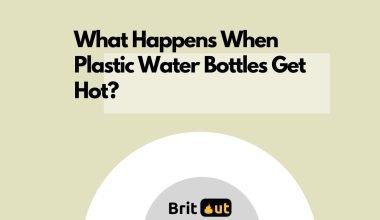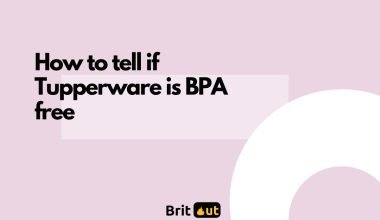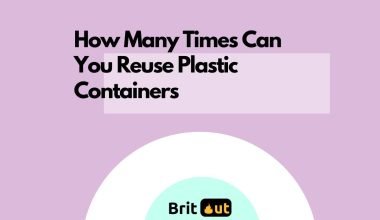Okay, so you’ve got a pile of plastic containers that need washing. You know the dishwasher is the quickest and easiest option, but you’re worried about whether your favorite Tupperware set will come out looking as good as new.
Fair enough, it’s worth the thought, because we all know plastics for melting in Dishwashers.
This article will provide a list of popular plastic materials that are dishwasher safe as well as others that are not. Sit tight!
What plastics are dishwasher safe?
Let’s begin with the good news. Many common types of plastic are indeed dishwasher safe.
Polypropylene, often designated with a ‘5’ inside the recycling symbol, is a robust material that tends to withstand high heat and water pressure. It’s often used for items like food storage containers and baby bottles.
Note: The recycling symbol is one way we can use to tell the difference between a dishwasher-safe plastic and one that is not.
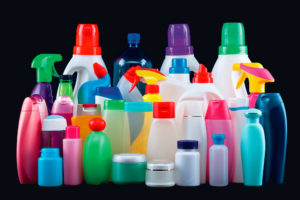
Then we’ve got high-density polyethylene (HDPE), denoted with a ‘2’ in the recycling symbol. This one’s a real trooper too, found in many everyday items like milk jugs and some plastic bags. It generally handles the dishwasher’s harsh environment quite well.
Next, we have polycarbonate, commonly labeled with a ‘7’.
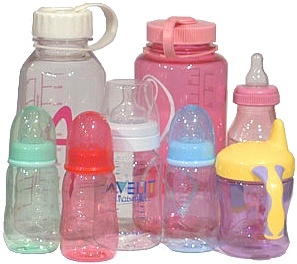
Here, we find ourselves in somewhat murky waters. While it’s used in items such as reusable water bottles and Tupperware, it may release Bisphenol A (BPA) when exposed to high temperatures, one of the few chemicals plastic does release when heated.
This, however, varies based on the product.
And of course, there’s good old ABS plastic, often found in high-quality plastic kitchenware. It’s typically safe for your dishwasher, but like with any good relationship, check in first—look for that ‘dishwasher safe’ label.
What plastics shouldn’t be put into the dishwasher?
Let’s face it, we all enjoy the simplicity of loading the dishwasher with everything and letting it do the work. But yet, it’s necessary to choose carefully what we put in plastic items.
Because, of course, we know the consequences if we don’t.
So here are some common examples of plastics that you should avoid putting in the dishwasher:
- PET (polyethylene terephthalate) – This plastic is commonly used to make soda and water bottles, so you may be familiar with it. It works excellent for one-time usage, but a dishwasher’s intense heat is not its intended environment. When heated enough, PET can bend, melt, or emit dangerous chemicals. So you never want to put PET in a dishwasher, even accidentally.
- PS (polystyrene) – Takeout containers and disposable coffee cups are frequently made of this material. PS should not be placed in the dishwasher, even though it could be okay for a single usage.
- PVC (polyvinyl chloride) – In addition to some food packaging, PVC’s are frequently used in shower curtains and vinyl flooring. It’s vital to avoid using themin the dishwasher as they’re known to release harmful compounds when heated.
- Acrylic: The last we have on our list is Acrylic. Although they’re normally strong and lightweight, a dishwasher’s heat and pressure are too much for them to handle. In fact, when exposed to the high heat on a norm, it can become stained, distorted, or even crack. Furthermore, keep in mind that abrasive detergents could also harm and dull the surface of your acrylic products.
- Non-heat-resistant plastics – Although this isn’t a particular kind of plastic, it’s crucial to be cautious of any plastic product that isn’t specifically marked as dishwasher- or heat-resistant. Even while some plastics appear to be durable enough to endure the dishwasher, they can nonetheless melt or distort in hot environments.
By avoiding these types of plastics in the dishwasher, you can ensure that your plastic items stay in good condition and don’t pose a risk to your health. When in doubt, it’s always better to err on the side of caution and hand-wash your plastic items.
Tips for safely washing plastic containers in the dishwasher
You can make sure that your plastic containers come out of the dishwasher clean, undamaged, and prepared for reuse by following a few easy tips and methods.
First things first, make sure your plastic containers are dishwasher-safe by checking the label.
You don’t want to run the danger of putting something in the dishwasher that isn’t meant to be there and having it melt or warp beyond repair. If you’re unsure, look for a little sign that resembles a dishwasher with water droplets or see the manufacturer’s instructions.
Next, place your plastic containers on the top rack of the dishwasher as you fill it. This will aid in shielding them from the spray arms of the dishwasher’s direct heat and pressure. Avoid utilizing severe wash cycles or high heat settings, as well.
While it may seem like a good idea to crank up the heat and blast away any leftover food particles, you’ll end up with warped, melted, or discolored plastic containers.
Lastly, make use of a light detergent made especially for dishwashers. Avoid using harsh chemicals or bleach on your plastic containers..
Also, remember to wait until your plastic containers are completely cool before removing them from the dishwasher. Sudden changes in temperature can cause plastic to warp or crack, and we don’t want that to happen to your favorite food storage containers!
Conclusion
When in doubt, hand washing is the safest option for plastics that are not explicitly labeled as dishwasher safe. It allows for better control over water temperature, detergent choice, and reduces the risk of damage or degradation


